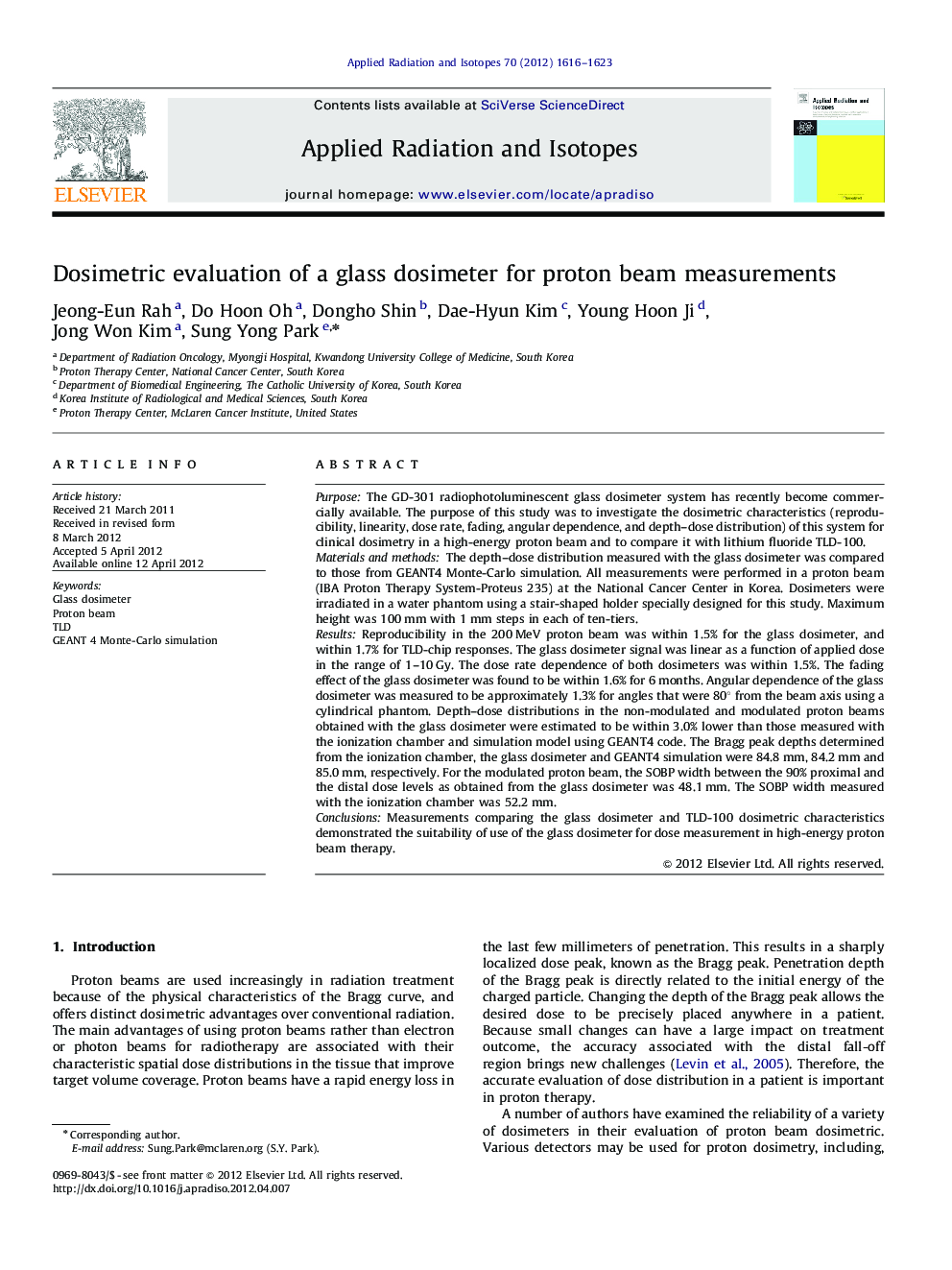| کد مقاله | کد نشریه | سال انتشار | مقاله انگلیسی | نسخه تمام متن |
|---|---|---|---|---|
| 1877709 | 1042236 | 2012 | 8 صفحه PDF | دانلود رایگان |

PurposeThe GD-301 radiophotoluminescent glass dosimeter system has recently become commercially available. The purpose of this study was to investigate the dosimetric characteristics (reproducibility, linearity, dose rate, fading, angular dependence, and depth–dose distribution) of this system for clinical dosimetry in a high-energy proton beam and to compare it with lithium fluoride TLD-100.Materials and methodsThe depth–dose distribution measured with the glass dosimeter was compared to those from GEANT4 Monte-Carlo simulation. All measurements were performed in a proton beam (IBA Proton Therapy System-Proteus 235) at the National Cancer Center in Korea. Dosimeters were irradiated in a water phantom using a stair-shaped holder specially designed for this study. Maximum height was 100 mm with 1 mm steps in each of ten-tiers.ResultsReproducibility in the 200 MeV proton beam was within 1.5% for the glass dosimeter, and within 1.7% for TLD-chip responses. The glass dosimeter signal was linear as a function of applied dose in the range of 1–10 Gy. The dose rate dependence of both dosimeters was within 1.5%. The fading effect of the glass dosimeter was found to be within 1.6% for 6 months. Angular dependence of the glass dosimeter was measured to be approximately 1.3% for angles that were 80° from the beam axis using a cylindrical phantom. Depth–dose distributions in the non-modulated and modulated proton beams obtained with the glass dosimeter were estimated to be within 3.0% lower than those measured with the ionization chamber and simulation model using GEANT4 code. The Bragg peak depths determined from the ionization chamber, the glass dosimeter and GEANT4 simulation were 84.8 mm, 84.2 mm and 85.0 mm, respectively. For the modulated proton beam, the SOBP width between the 90% proximal and the distal dose levels as obtained from the glass dosimeter was 48.1 mm. The SOBP width measured with the ionization chamber was 52.2 mm.ConclusionsMeasurements comparing the glass dosimeter and TLD-100 dosimetric characteristics demonstrated the suitability of use of the glass dosimeter for dose measurement in high-energy proton beam therapy.
► The dosimetric characteristics of glass dosimeter for the proton beam.
► Compared to those from GEANT4 Monte-Carlo simulation.
► Considerable potential for use as a new dosimeter for clinical proton beams.
Journal: Applied Radiation and Isotopes - Volume 70, Issue 8, August 2012, Pages 1616–1623